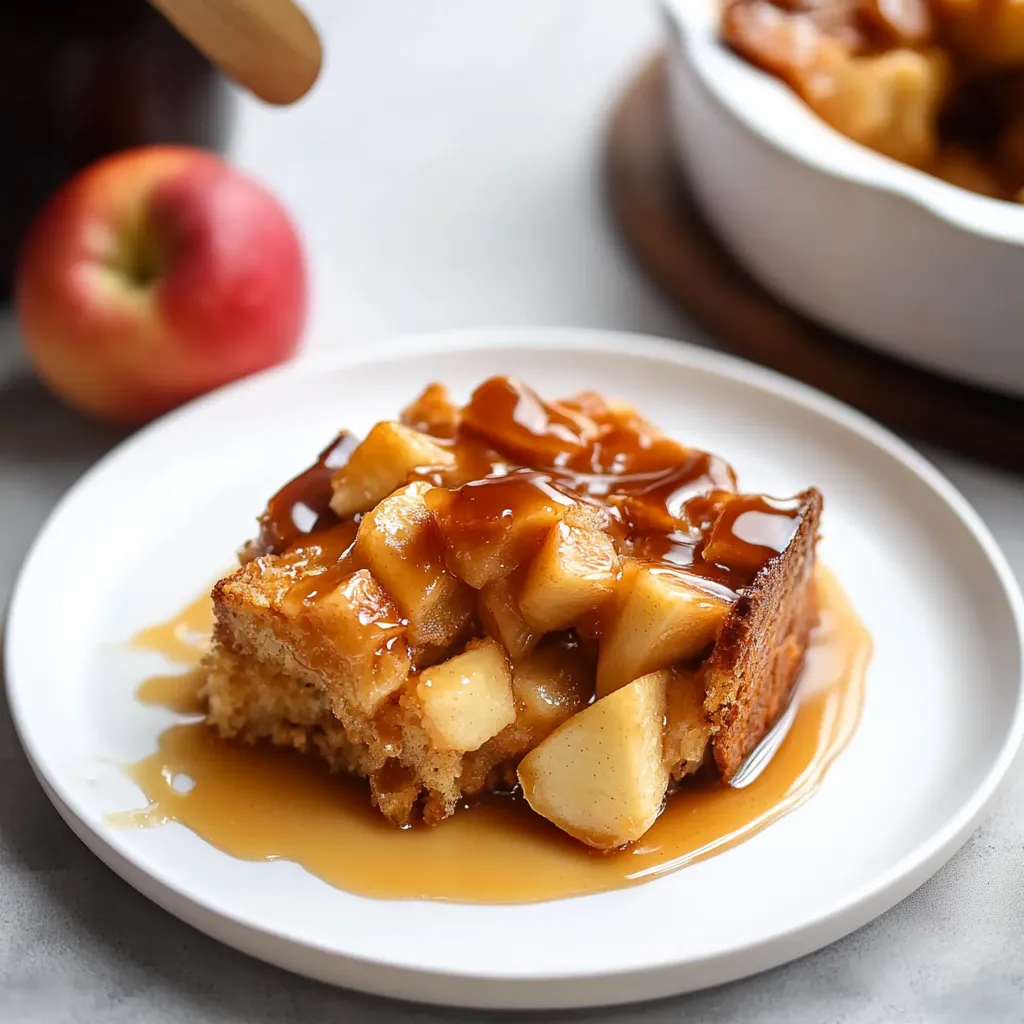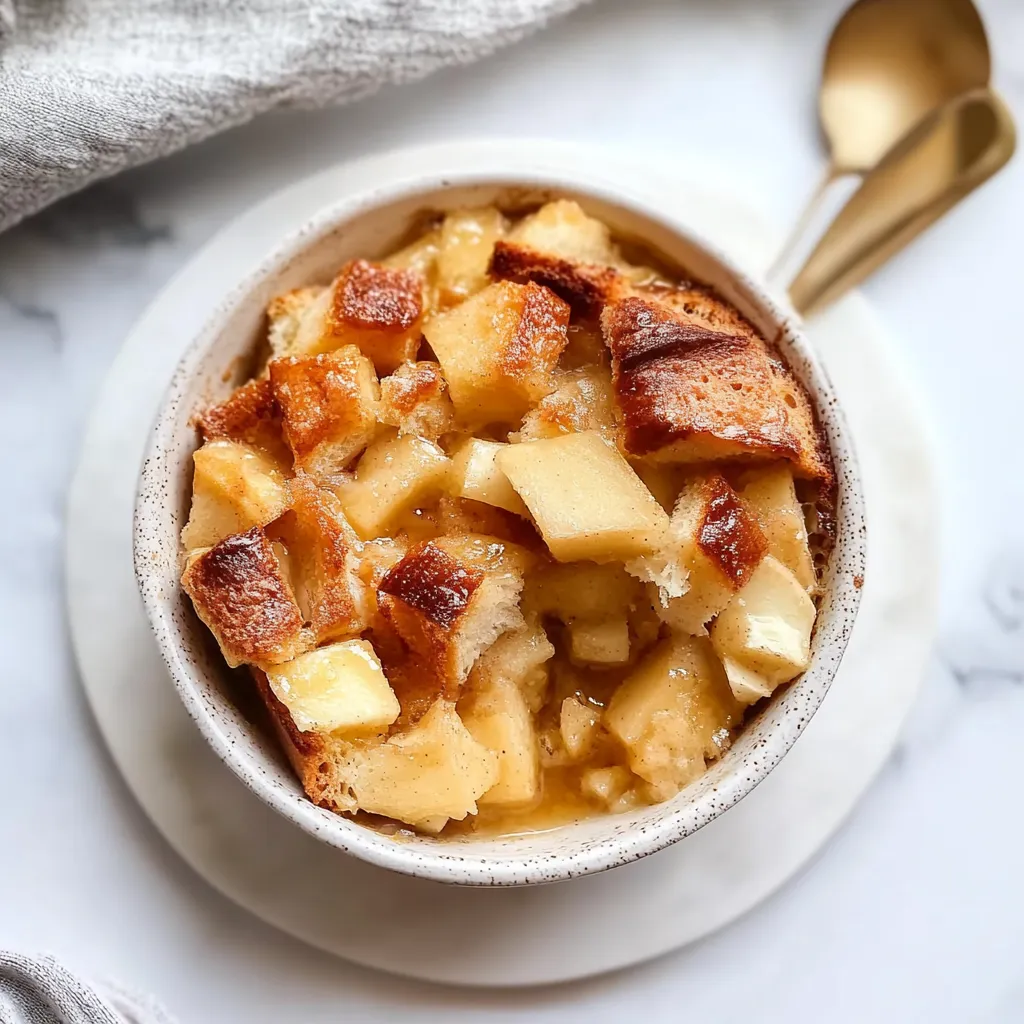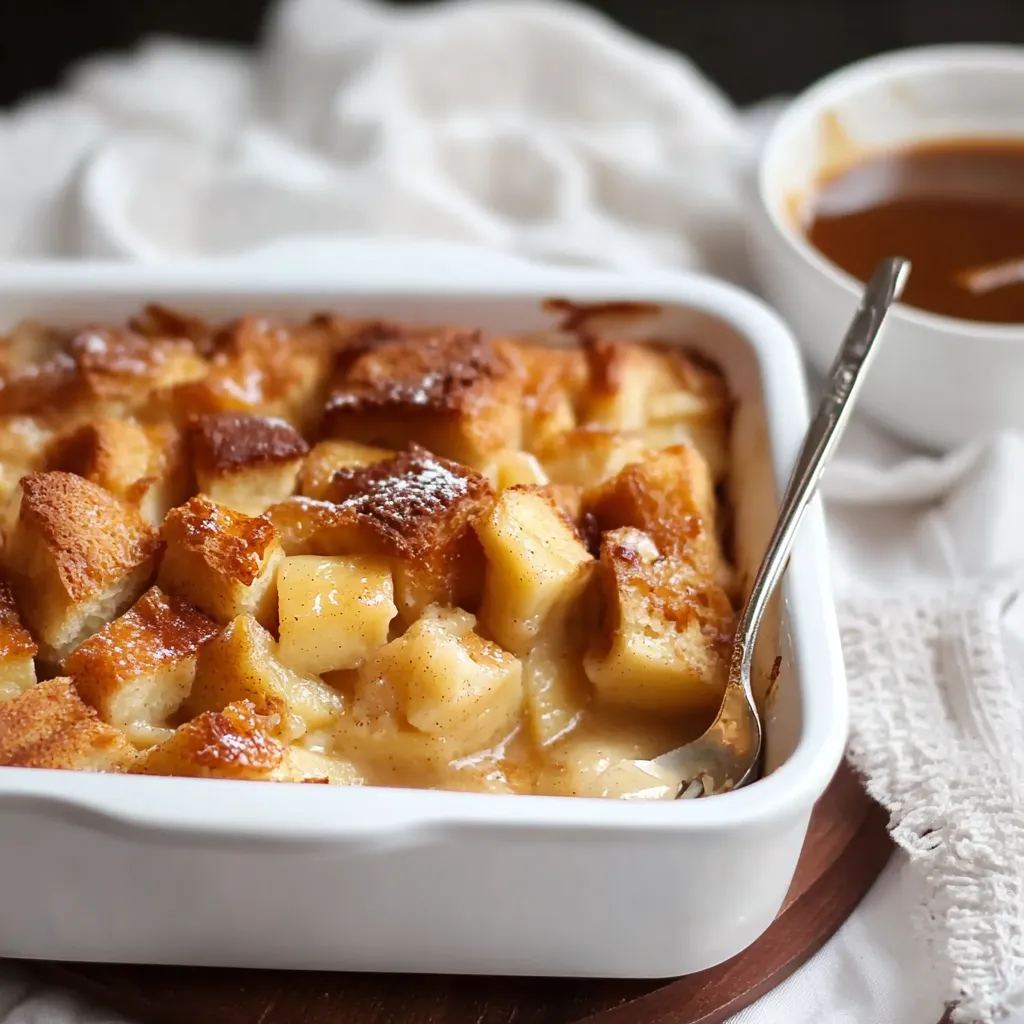 Pin it
Pin it
When warm, cinnamon-dusted apples mix with buttery brioche during baking, they make the ultimate comfort food. After tweaking bread pudding recipes for years, I've found that true success comes from watching how the elements work together. Every single part - from bread soaking up egg mixture to the whiskey-infused topping - does something special in creating a treat you won't forget.
I made this for friends at a autumn get-together last week, and everyone went quiet as they took their first warm, bourbon-drizzled mouthfuls. My trick? Knowing how to stack flavors and nail that smooth, creamy texture throughout.
Key Components and Shopping Advice
- Bread: Pick brioche or challah for extra richness, or go with French bread for a nice chew.
- Apples: Mix Honeycrisp for sweet notes and Granny Smith for tang; both stay firm when cooked.
- Spices: Don't use old spices - freshly grated nutmeg makes all the difference.
 Pin it
Pin it
Making It Happen
Start by slicing your bread into same-sized chunks, roughly one inch each. For fresh bread, lay the pieces on a cookie sheet and dry them at 200°F for about 15 minutes - you want dry bread, not toast.
 Pin it
Pin it
Crafting Your Creamy Foundation
Your egg mixture needs special care. Use eggs that sat out a bit - they'll mix better with warm milk. Beat them well until they look airy and even, then slowly pour in slightly warmed milk and cream, stirring non-stop. This temperature trick keeps eggs from clumping up. Stir in your sugars and spices, watching them melt into the mix.
Taking Time to Soak
Here's where you can't rush things. Put your bread chunks in a big bowl, dropping apple pieces throughout as you go. Pour your egg mixture over everything bit by bit, gently mixing to coat everything evenly. That 15-minute soak isn't just waiting - it's when the bread drinks up all that goodness, setting you up for amazing texture later.
Getting the Bake Right
Your oven should be hot and ready - stick a rack in the middle and give it at least 15 extra minutes after it beeps that it's heated. Dump your soaked bread mix into your greased baking dish, making sure apple chunks aren't all in one spot. Some bread bits might float - just push them down so they stay cozy in the liquid.
Whipping Up the Bourbon Drizzle
While it's cooking, make the star topping - that rich bourbon sauce. Grab good butter and melt it slowly on medium. Toss in brown sugar, always stirring until it totally blends with the butter. Next comes cream, making everything silky smooth. Add your bourbon after taking it off the heat - this keeps its fancy flavors but cooks off the boozy kick.
Knowing When It's Done
Spotting perfectly finished bread pudding takes practice. Watch for these clues: the top turns golden and puffs up slightly, and when you gently shake the pan, the middle wiggles just a bit - kind of like custard that's almost set. If you stick a knife near the center, it should come out mostly clean with just a few wet crumbs stuck to it.
Why Waiting Matters
Those ten minutes after baking aren't wasted time. The leftover heat keeps cooking the custard gently while everything firms up properly. This is also the perfect moment for adding the bourbon sauce - it should be warm enough to sink in a little but not so hot it ruins the delicate custard structure.
Historical Background
Bread pudding started as a thrifty dessert, using up old bread instead of throwing it away. This fancy version, with its rich egg base, fresh apples, and boozy sauce, shows how old-fashioned recipes can grow up while keeping what makes them so satisfying. It's comfort food that's gone upscale but still remembers where it came from.
Switching It Up Through The Year
- Summer: Swap apples for juicy peaches or mixed berries.
- Autumn: Try wine-soaked pears or tart cranberries.
- Winter: Mix in dried fruit that's been soaking in bourbon.
- Spring: Go lighter with rhubarb and strawberry combo.
Handling Heat and Texture Like a Pro
- Let eggs and dairy warm up before mixing for smoother results
- Make sure the oven's completely hot for the custard to set right
- Watch your bourbon sauce heat carefully to avoid burning
- Serve while warm but not blazing hot so it holds together
Making Memories Around Food
This sweet treat can turn regular nights into something special. Bring the whole baking dish to the table for casual family meals, or scoop portions into small ramekins when you want to impress guests. Top with a scoop of vanilla ice cream that slowly melts, creating little streams between the soft, custardy bread pieces.
Tools That Make A Difference
- Baking Dish: Pick one with a thick bottom for even cooking.
- Whisk: A big balloon-style whisk gives you the smoothest custard.
- Serrated Knife: Cuts bread cleanly without squishing it.
- Saucepan: One that heats gradually stops your sauce from burning.
 Pin it
Pin it
Planning Your Week Around Tasty Treats
One great thing about this pudding is you can get it ready ahead of time. Mix the bread and egg mixture the evening before, cover it tight, and stick it in the fridge overnight. Just pull it out 30 minutes before baking so it warms up a bit. You can even make the sauce three days early and warm it up with a splash of cream to bring back its smoothness.
Final Thoughts and Reflections
Making truly great bread pudding means understanding how heat, texture, and timing all play together. After trying countless versions in my kitchen, I've learned that success isn't just about following steps - it's about developing a feel for how the pudding should look and behave every step of the way.
Frequently Asked Questions
- → Can I skip bourbon in the sauce?
- Sure! Use apple cider or vanilla extract instead.
- → Which apples should I pick?
- Go for something tart and firm, like Honeycrisp or Granny Smith.
- → Can I prep it early?
- Yep! Keep the sauce and pudding separate, then warm them up when needed.
- → Why toast the bread first?
- It helps soak up the custard better. Stale bread works without toasting.
- → How can I check if it’s ready?
- Stick a knife in the middle—it should be clean. The top will also look golden.
